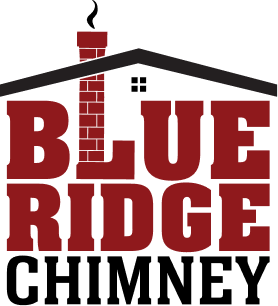What is spalling?
Spalling is a condition in which the surface of masonry materials such as brick or stone begin to break down. It is most commonly seen in brick chimneys, where it is caused by moisture penetrating the brick and freezing. This causes the brick to expand, resulting in chipping or flaking of the exposed brick surface. In extreme cases, the entire brick can crack or crumble away. Spalling not only weakens the structural integrity of the chimney, but also exposes interior surfaces to further damage from moisture, creating a vicious cycle of decay and deterioration.
What causes spalling?
Spalling is caused by a combination of weathering, thawing and freezing temperatures, and moisture penetrating the brick of the chimney. The brick is weakened by this process, eventually causing it to chip away, or “spall”. The most common cause of spalling is exposure to water, which can make soft brick more susceptible to damage. When moisture infiltrates the brick, it expands as it freezes, resulting in weak spots and cracking. As temperatures change, such as during a thaw cycle, the wet brick expands and contracts, causing further weakening of the brick structure and spalling. Spalling can also occur due to extreme weather conditions, such as hail and wind storms that can drive debris into the chimney, causing physical damage to the bricks.
How do you know if your chimney has spalling?
One of the first signs that you might have spalling in your chimney is if you notice chipping or flaking of the brick. Spalling will often start at the top of your chimney where the mortar has worn away, and then gradually move downward over time. If you spot chipping or flaking in the bricks, it’s time to inspect your chimney more closely. You may also notice a discoloration or staining on the bricks as this can be an indicator that moisture is penetrating the surface. Additionally, if you find areas of your chimney which are wet or are leaking water, there’s a good chance that spalling is present. If any of these signs are present, it’s important to contact a professional to assess and repair any damage caused by spalling. The process starts with removing any pieces of masonry that have already broken off due to the spalling process, followed by grinding down any remaining chipped or flaked pieces from the affected area. Then, a new layer of masonry is applied and tuck pointed into place to ensure proper adhesion. Once complete, your chimney should be as good as new. However, to help prevent future problems with spalling it’s important to make sure that your chimney is waterproofed properly and that gutters around the perimeter of your home remain free from debris. In addition, regular inspections should be conducted to make sure that the masonry isn’t breaking down further due to weathering or other factors. Taking proactive measures now can help protect your chimney against further deterioration due to brick spalling.
What are the dangers of ignoring spalling?
When chimney brick spalling is not addressed and remedied, it can lead to major problems for your chimney and the structure of your home. Not only does it become unsightly, but it can also cause serious damage. As the spalling progresses, bricks or mortar can start to come loose and begin to fall from the chimney. This poses a major risk, as it can cause further deterioration and put the structural integrity of your home at risk. In addition, when bricks or mortar are falling away from the chimney, it can create gaps where air and water can enter and start to leak into the chimney. If not addressed quickly, these leaks can cause more damage by rotting out the surrounding structure and leading to mold and mildew growth. All of these things can be avoided by having any signs of spalling repaired as soon as possible.
How do you repair spalling?
When it comes to repairing spalling, the most common solution is repointing. Repointing involves removing the existing mortar between the bricks and replacing it with new mortar. This process helps ensure that the bricks are secure and properly sealed. It also helps to protect against future spalling damage.
If the bricks are severely damaged, they may need to be replaced. This process involves cutting out the old bricks and plugging in new bricks. New mortar will then need to be applied around the new bricks to make sure that they are securely sealed.
In either case, repointing or replacing the bricks, it is important to use the same type of mortar as was used for the original installation. Different types of mortar can have different levels of durability and performance. Using the wrong type could lead to further damage or deterioration of the chimney over time.
No matter what kind of repair needs to be done, it is important to get professional help to make sure that your chimney is repaired correctly and safely. DIY projects are not recommended when it comes to spalling as this could lead to more serious problems down the road. A qualified contractor will be able to assess the situation and provide you with the best solution for your chimney’s needs.
